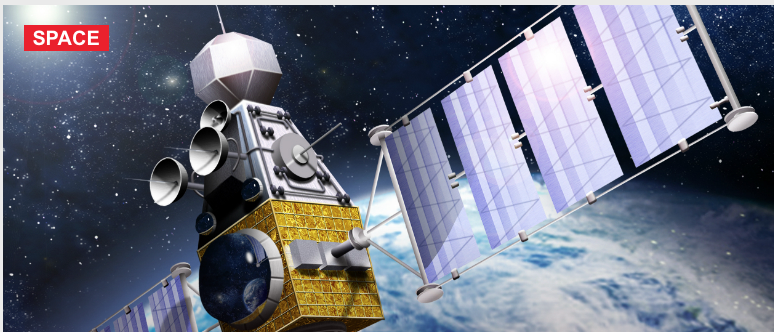Three Russian satellites that have been a mystery to observers have begun moving again, apparently being reactivated after orbiting silently for a year. The trio have been in space since the first one launched in 2013 (the last shot off to orbit in 2015), but the purpose for their launching is unknown. Adding to the mystery is the fact that the satellites have collectively made only minimal movements in the past four years, and none in the past year or so.
So what are the Russian satellites doing? What is their mission?
Although the Russian satellites are moving again, observers are no closer to solving the mystery of their existence. According to the Daily Beast, one of the satellites reportedly dropped hundreds of meters from its previous orbit on April 20 to get within 1,200 meters of what amounts to space junk — a large piece of a now defunct Chinese weather satellite that China itself intentionally damaged in a controversial anti-satellite rocket in 2007.

Observers are keeping a close watch on the satellite — and its two brethren — but remain puzzled over its actions and its possible objectives. As David Axe, writing for the The Daily Beast, points out: “No one outside of the Russian government — and probably the US military — seems to know for sure what the satellites are for.”
Of course, that has not stopped speculation.
It has been suggested that the Russian satellites could be technology-demonstrators. Or they might be precursors to orbital weapons on test runs. They could be eavesdropping or hacking satellites that might be able to infiltrate, shadow, copy or interfere with other satellites’ operational programs. They might also be weapons themselves, “killer satellites” that, for whatever reason, have been kept dormant but have the ultimate goal of destroying other satellites.
And though it all sounds a bit like science fiction, with satellites zipping around in outer space dogfights and such, the reality exists that several nations — like the United States, China, and Russia — have entered into a space arms racewhere the spacecraft have the capability to maneuver and perform in military capacities. Back in November, CNN aired War In Space: The Next Battlefield, a documentary that presented the ideas of kamikaze, kidnapper, and killer satellites as not only drawing-board ready but, in some cases, operational.
The three mystery satellites are code-named Kosmos-2491, Kosmos-2499, and Kosmos-2504. All have moved toward specific targets (once they started maneuvering, that is; the satellites at first were considered orbit-stationary) and considered to be inspection satellites (which are fairly common). One, Kosmos-2491, was launched along with three communications satellites and thought to be a piece of space junk, had observers not detected its maneuverability. (Russia had also announced the launch of the communications satellites, but not Kosmos-2491. Russia acknowledged Kosmos-2491 only after foreign and independent skywatchers detected it moving under its own power.)
Independent expert on Russian spacecraft, Anatoly Zak, has noted that the Russian satellites have the dimensions of known inspection craft. In 2015, he also admitted the military implications. “You can probably equip them with lasers, maybe put some explosives on them,” he said. “If [one] comes very close to some military satellite, it probably can do some harm.”
But Russian space agency chief Oleg Ostapenko took no chances with negative media coverage, insisting in a 2014 statement that the trio of maneuverable spacecraft was peaceful in purpose. They were not, as some had fearfully labeled them, “killer satellites.”
It has been suggested that the mystery satellites have been dormant because they are stealth weapons, only to be activated when necessary to conduct some heretofore unknown mission. To “awaken” them periodically and have them move about to see if they are still operational only makes sense, Dr. Laura Grego, a space expert with the Massachusetts-based Union of Concerned Scientists, told The Daily Beast.
Still, Brian Weeden, a space expert at the Secure World Foundation in Colorado, warned against assuming that the spacecraft were some sort of “killer satellites.”
“In most cases, it’s far easier to jam a satellite’s communications or hit it with a missile than try and do some sort of destructive co-orbital rendezvous,” Weeden told The Daily Beast. “The capability to do rendezvous and proximity operations… has a whole bunch of applications — civil, commercial and military.”
But seeming strange behavior tends to prompt speculation. Besides, everyone loves a mystery, especially one that involves Russians and “killer satellites” and is set in outer space.

